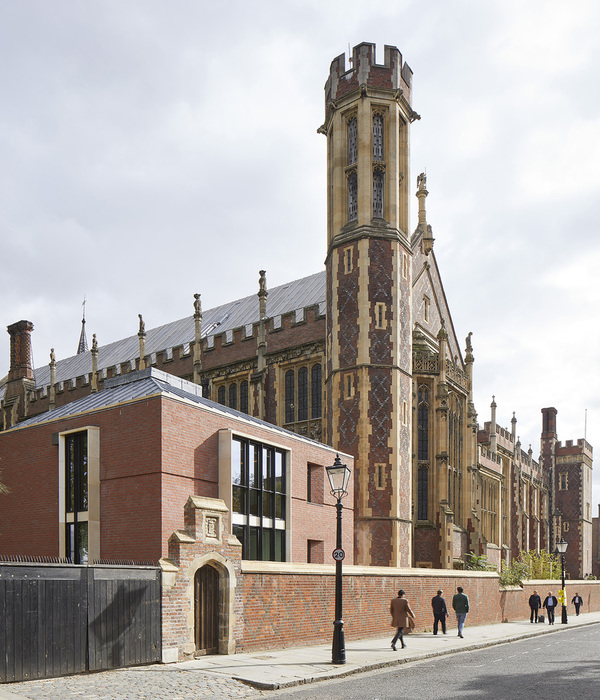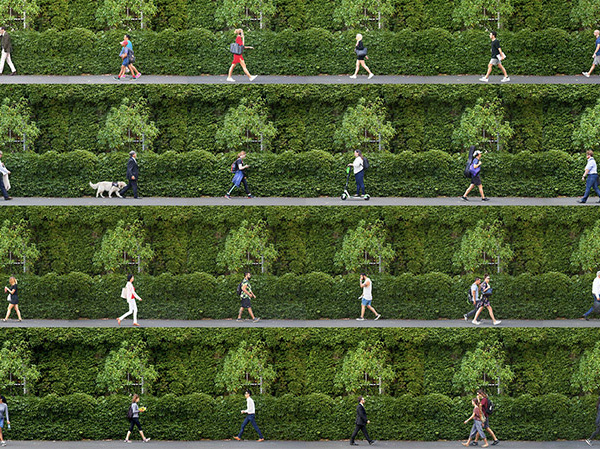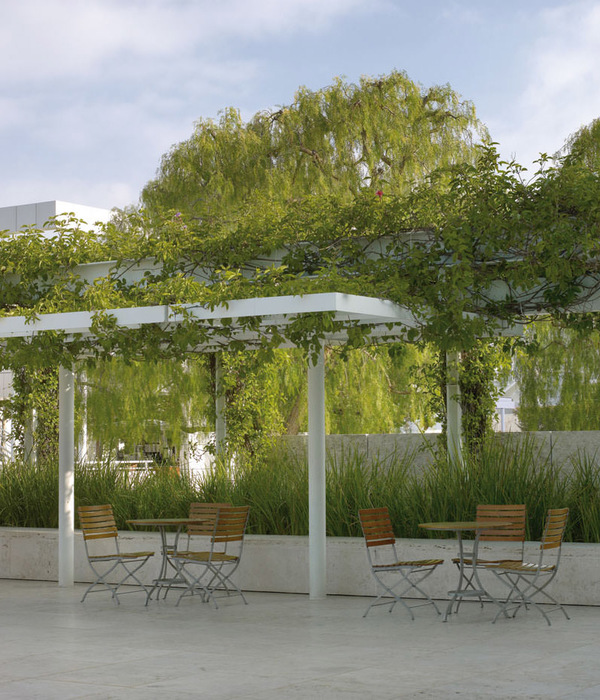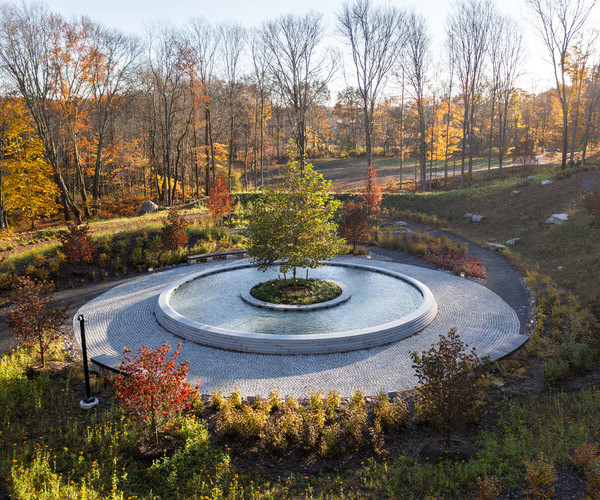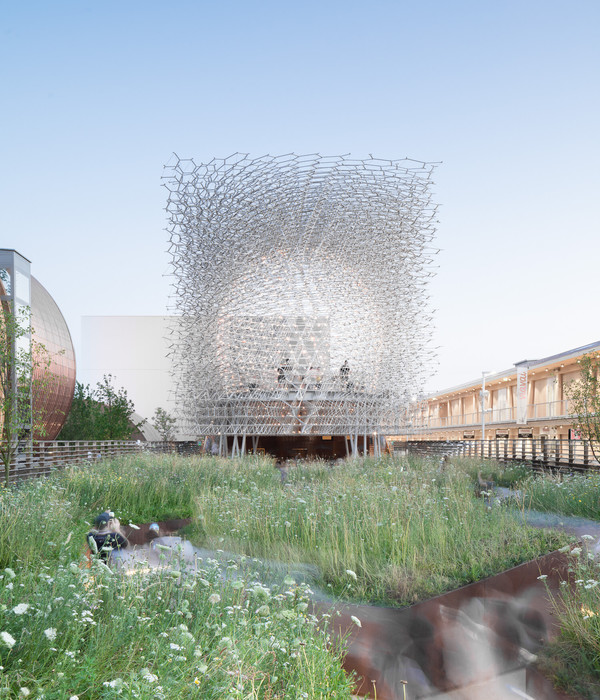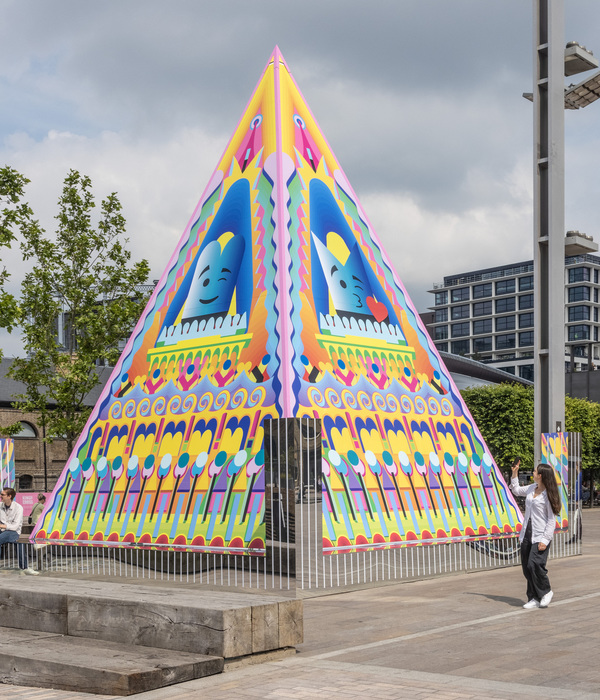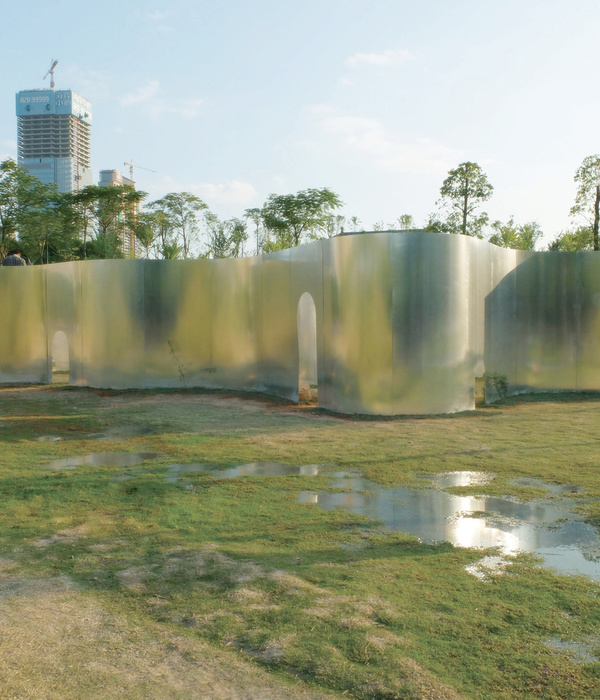A complete redesign of the ground floor of Museum of the Moving Image, plus construction of a three-story addition and Courtyard Garden, will double the size of the existing building, enable growth and innovation in the Museum’s uniquely comprehensive presentation of screen culture in all its forms (film, television, and digital media) and welcome visitors into an experience in which architecture is seamlessly fused with the moving image. Major new program spaces include a 264-seat theater, 68-seat screen room, Video Screening Amphitheater, gallery for changing exhibitions, Education Center, on-site collection storage, café, museum store and Courtyard Garden.
位于纽约的一个改建项目,将项目从花园到地下室通通改建一番,并增加与原有博物馆相同的面积。提供独特的文化面貌(电影,电视,数字媒体),并将其融合在建筑中,迎接每一位客人。新方案包括:264座的剧院,68座的放映室,画廊,教育中心,可变化的展示空间,仓储空间,咖啡馆,商店以及博物馆庭院花园。
设计亮点很多,全投影技术与室内空间交融一体,大堂泛着凉爽的蓝光,倾斜的天花板形成了自然的聚会空间。264座的剧院非常科技化,墙面和天花由1136块三角板组成编织的纹样,配上活力的蓝光,动感十足。高清屏幕,舞台还可举办其他活动,也有空间放置配乐乐团演奏空间。小型展览区使用了最新科技,并提供互动。画廊的目的是用数字装置展示各类展览材料。三楼主要是研究人员空间。教育中心在地下,也占了三楼的部分,每年接待学校团体约6000名学生,还里一个小吃店。68座的放映厅一点也不逊色于大剧院,入口的红色和内部的灰色穿孔墙面形成鲜明对比。这里体现亲密的尺度。室外庭院是学校团体入口,在夏天可以成为露天咖啡区和临时电影放映区。博物馆后侧的外立面是由1067块薄铝合金开放式组成的超轻前卫表皮。更多内容请看英文介绍。
英文介绍:Located in New York, a renovation project has transformed the entire project from the garden to the basement, and has added the same area as the original museum. It provides a unique cultural appearance (film, television, digital media) and integrates it into the architecture to welcome every guest. The new plan includes: a 264-seat theater, a 68-seat screening room, a gallery, an education center, a flexible display space, a storage space, a café, a store, and a museum courtyard garden.
There are many design highlights: the entire projection technology and indoor space merge into one, the lobby emits a cool blue light, and the sloping ceiling forms a natural gathering space. The 264-seat theater is very technological, the walls and ceilings are made of 1136 triangular plates to form a woven pattern, matched with vibrant blue light, full of dynamics. The high-definition screen, stage can also host other activities, there is also space to place the music orchestra performance space. The small exhibition area uses the latest technology and provides interaction. The purpose of the gallery is to use digital devices to display various exhibition materials. The third floor is mainly researcher space. The education center is underground, and it also occupies part of the third floor. It receives about 6000 students from school groups every year, and there is also a small snack shop. The 68-seat screening room is not inferior to the big theater, the red entrance and the gray perforated wall inside form a striking contrast, showing intimacy. The outdoor courtyard is the entrance for school groups, which can become an outdoor coffee area and a temporary movie screening area in summer. The museum’s rear facade is made of 1067 thin aluminum alloy open-ended pieces, forming a lightweight and avant-garde skin. For more information, please see the English introduction.
Peter Aaron/Esto. Courtesy of Museum of the Moving Image.
DESIGN HIGHLIGHTS
A relocated and redesigned entrance on 35 Avenue now presents visitors with a portal of mirrored and transparent glass with the words “Museum of the Moving Image” in letters three and a half feet tall. With its teasing play of light—merging direct vision and reflection within a single plane—the entrance is itself the first screen that visitors encounter at the Museum.
As visitors move into the new lobby, across a polyester floor in a cool light blue, they pass along a 50-foot-long wall coated with screen paint, used as the surface for a seamless panorama of projected video, with works selected on a changing basis by the curatorial team. Lending a sense of dynamism to the visitor’s progression through the lobby, the projection wall is canted at an 83-degree angle. Toward the far end of the lobby, a new café is located opposite a gathering space carved out beneath a sloping ceiling, whose angle follows the underside of the main theater.
Visitors may turn to the right from the lobby and step up through either of two tunnels in Yves Klein blue into the new 264-seat theater: a space designed as a capsule for the imaginary voyage of moviegoing. The ceiling and walls are a woven felt surface of sensuous, vibrant Yves Klein blue, which slips under the stadium-rake seating to give the audience a sensation of floating. This wraparound surface is made of 1,136 triangular panels, fitted together with open joints with the lighting integrated within. Outfitted with an ample screen of classic proportions and projection equipment for formats from 16mm to 70mm and highdefinition digital 3-D, the theater will provide an unsurpassed filmgoing experience. A stage accommodates the Museum’s ongoing series of discussions and other live events, while a miniorchestra pit provides space for musical accompaniment of silent films.
On the left side of the lobby, across from the entrance to the theater, stands the grand staircase. At the first landing, the staircase widens into a 1,700-square-foot Video Screening Amphitheater. The seats are an abstract landscape of built-in benches, while the wall above the staircase serves as the screen for changing exhibitions of moving-image works. Passing up the staircase to the second floor, visitors will find a small exhibition gallery, a secondary entrance to the main theater and an entrance to one of the two floors of the 15,000-square-foot core exhibition Behind the Screen, which has been completely refurbished with new monitors, computers, interactive software and lighting. At the top of the grand staircase, the new gallery for changing exhibitions on the third floor provides the Museum with its first completely flexible space for presenting cutting-edge new projects. With 4,100 square feet of unencumbered space, the gallery is designed to allow the Museum to present exhibition materials of every variety, from screen-culture artifacts to digital media installations. The new on-site space for collection storage, located on the third floor, serves an international community of researchers and scholars, offering unprecedented access to much of the Museum’s unparalleled collection of more than 130,000 objects. The new Ann and Andrew Tisch Education Center occupies the entire west side of the ground floor in both the addition and the existing building, as well as spaces on the third floor and the lower level. Enabling the Museum to accommodate twice as many school groups as in the past, to serve 60,000 students a year, the Education Center provides a dedicated group entry, the William Fox Amphitheater for student orientation, a flexible Digital Learning Suite with specially designed mobile computer workstations (divisible into two discrete media labs, or able to function as an open auditorium for up to 100 students), and the Nam June Paik Experimental Production Studio where students can record their own high-tech video works, finish them in a postproduction bay and distribute them to a world-wide audience via the Internet. A lunchroom will accommodate school groups that require this facility and previously could not benefit from tours of the Museum. Incorporated into the Education Center, but regularly used for public programs, is the new 68-seat film and digital Celeste and Armand Bartos Screening Room. Equal in excellence to the 264-seat main theater but presenting a striking design contrast, this secondary screening room has a hot pink entrance and features exposed loudspeakers and a grey, perforated acoustical wall surface, making it more of an exposed machine for the moving image. The space is ideal for more intimate screenings and presentations, as well as classroom and symposium use. The new, 10,370-square-foot landscaped Courtyard Garden incorporates the dedicated entrance for school groups. During summer months, it will provide space for an outdoor café, and a large temporary screen may be installed for open-air movie showings.
The new rear façade of the Museum is comprised of a surface pattern of triangles like those in the main theater, but made in this case out of 1,067 thin aluminum panels, which are mounted on the support structure with open joints, so that every joint is a rain grate. Light blue in color, the panels look razor-sharp but create the impression of a super-light floating skin dematerialized against the sky: another visual reference in the architecture to the infinite thinness of the moving image. In their pattern, the panels also bring to mind the lines of wireframe computer drawings. Because the triangular panels must fit together precisely to form the skin, the entire rear façade, which is approximately 200 feet long, is built to a tolerance of 3/16 of an inch.
LOCATION
35 Avenue at 37 Street
Astoria, New York
MUSEUM LEADERSHIP
Rochelle Solvin, Director
Herbert S. Schlosser, Chairman of the Board of Trustees
ARCHITECT
Thomas Leeser, Leeser Architecture
MUSEUM LEADERSHIP
Rochelle Solvin, Director
Herbert S. Schlosser, Chairman of the Board of Trustees
KEY DATESGroundbreaking: February 27, 2008
Public Opening: January 15, 2001
SIZE
Current Museum Building: 50,000sq ft
Total New Contruction: 47,700sq ft
Indoor 37,300sq ft
TOTAL CAPITAL CAMPAIGN
$67 millionGREEN DESIGN
The project is being designed to achieve Silver LEED certification.
ARCHITECTURAL TEAM
Leeser Architecture, New York
Founder and Principal: Thomas Leeser
Project Manager: David Linehan
Design Team: Simon Arnold, Kate Burke, Sofia Castricone, Henry Grosman, Joseph Haberl
CONSULTANTS
Owner’s Representative: Levien & Company, Inc.
Construction Manager: F.J. Sciame Construction Co., Inc.
Audio/Visual: Scharff/Weisberg
Acoustician: Jaffe Holden Acoustics, Inc.
Lighting: L’Observatoire International
Graphics: karlssonwilker inc.
Exterior Wall: R. A. Heintges & Associates
MEP Engineers: Ambrosino, DePinto & Schmieder
Specification: Construction Specifications Inc.
Structural Engineers: Anastos Engineering Associates
Civil/Geo-Technical: Stantec
Code/Expediting: JAM Consultants, Inc.
Elevator: Van Deusen & Associates
Hazardous Materials: TRC Environmental Corporation
Projection Systems: MDC Group, LLC
Restaurant Program: JGL Foodservice Design
Security: Ducibella Venter & Santore
Sustainable Design: Atelier Ten
Telephone & Data: Shen Milsom Wilke
Textile Design: Cindy Sirko
Courtyard: David Dew Bruner
AV Contractor: Electrosonic Inc.
Security Contractor: Tritech Communications
{{item.text_origin}}


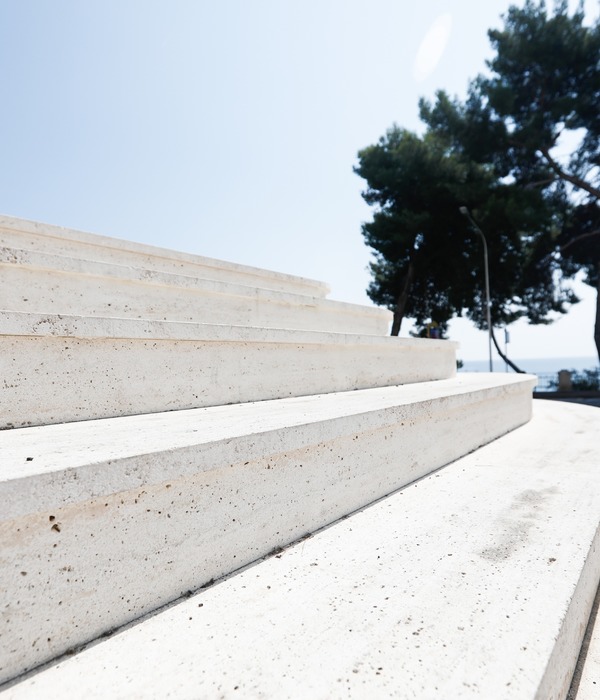
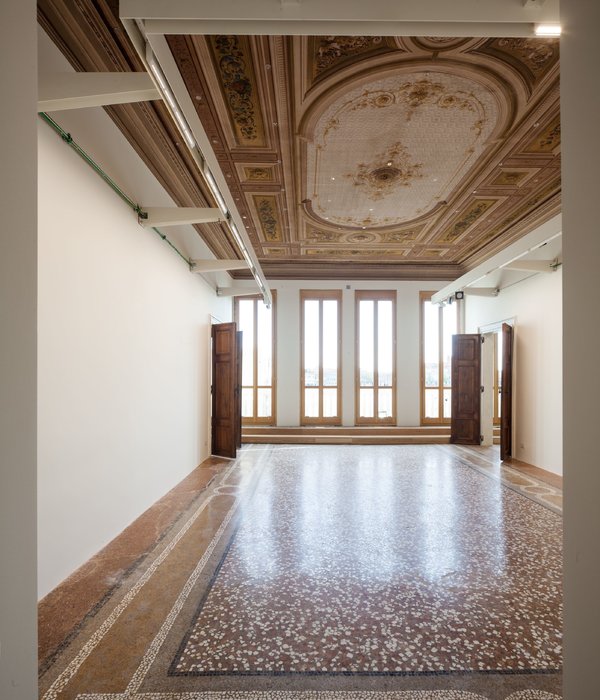

![PA[SM] 艺术之家 | 历史建筑的现代复兴 PA[SM] 艺术之家 | 历史建筑的现代复兴](https://public.ff.cn/Uploads/Case/Img/2024-04-14/NuIZgRmydcUKAYxbavQJARPDc.jpg-ff_s_1_600_700)
